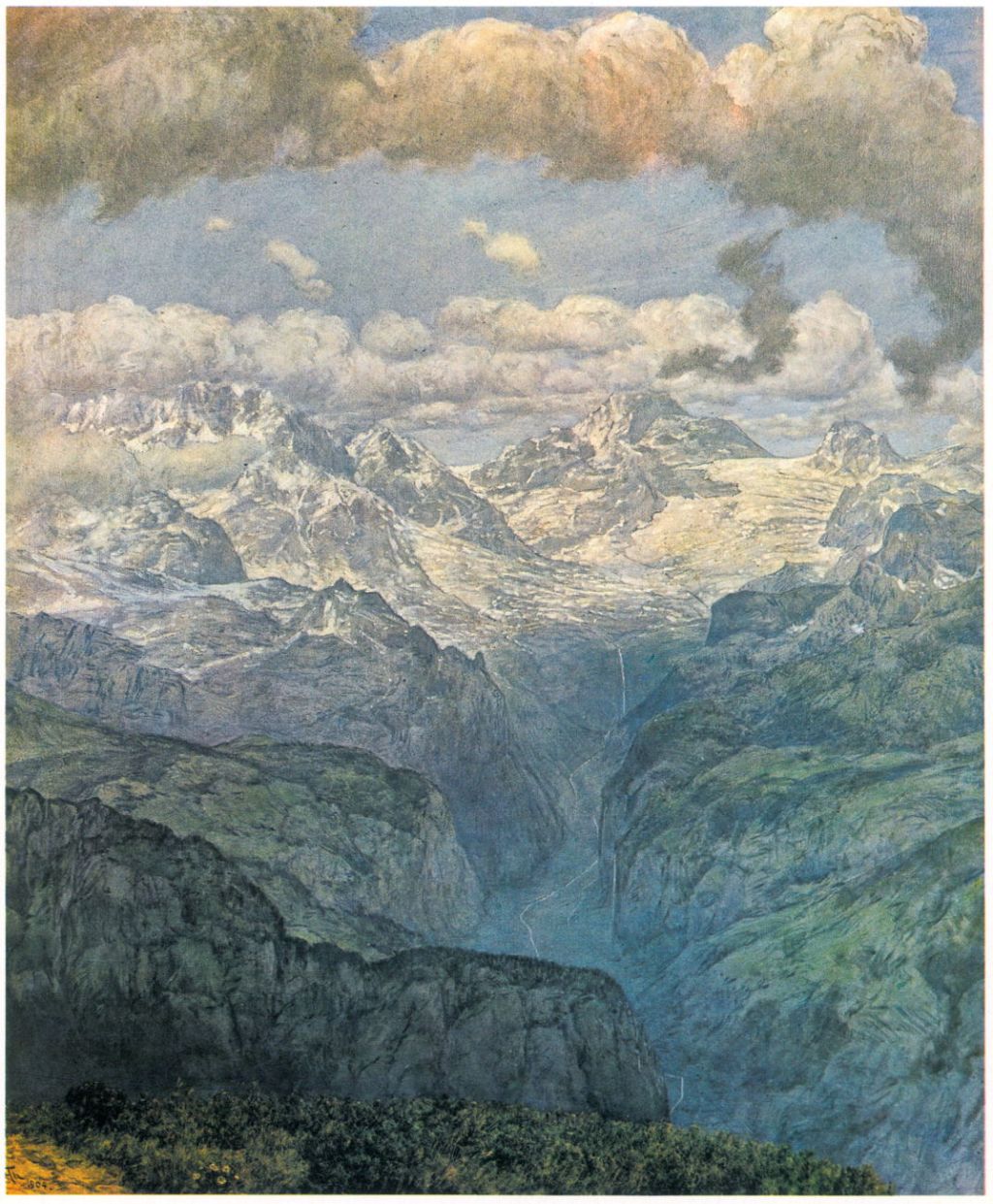In the first of these two articles showing paintings of gorges, I included a work by Carl Gustav Carus, one of Caspar David Friedrich’s pupils. This sequel starts with two works by another equally Romantic follower of Friedrich, Carl Friedrich Lessing.

In Lessing’s Riflemen Defending a Pass from 1851, soldiers are lining the edge of crags overlooking a gorge, seen at the lower left corner, through which their enemy is travelling. One casualty is already draped against a rock at the right. In the distance and on the other side of the gorge, a high fortress is under attack, with smoke billowing from both its towers.

Lessing’s undated view of a Rocky Landscape, Gorge with Ruin, shows the burned-out ruins of an old castle beside an icefall, in higher ground towards the Alpine peaks.

Edward Lear was an extraordinary traveller who loved dramatic scenery, as shown in his view of the Pindus Mountains in Zagori, Greece, painted in 1860. I believe this may be part of the spectacular Vikos Gorge, now a major tourist attraction in the area.

On the other side of the Atlantic, adventurous artists like Frederic Edwin Church were painting tenuous bridges over gorges. His Pichincha from 1867 shows a suspended bridge in Ecuador, one end glowing in the early morning light. Just over half way across (detail below), a woman wearing a brilliant red blouse is riding side-saddle on a mule, which is picking its way slowly across the thin logs forming the walkway of the bridge. At the left end is another mounted figure, who has just completed that frightening crossing.

Gorges also made their way into literature, including Goethe’s Faust.

Émile Bayard’s Death of Faust from about 1870 shows the character of the title falling into a mountain gorge in the final scene, as Mephistopheles flies above.

Arnold Böcklin’s Spring in a Narrow Gorge from 1881 appears to be a straightforward landscape painting, of a few birch trees in fresh Spring foliage in a narrow gorge. The water source referred to in the title probably runs among the rocks at the base of the gorge, but isn’t readily visible.

Castellane, painted through the winter of 1902-03, is one of a pair of Divisionist paintings by Paul Signac showing gorges in the south-east of France. This shows Notre Dame du Roc, the small chapel at the left end of the rock towering over the River Verdon, with the village of Castellane at the lower left. Its companion (image not available) shows the small town of Sisteron nestling in its gorge on the River Durance.

Hans Thoma’s 1904 painting of The Lauterbrunnen Valley shows one of the deepest valleys in the Swiss Alps, a gorge which travels five miles up to spectacular Staubbach Falls, with the Eiger and other peaks beyond.
For much of Ferdinand Hodler’s career, gorges weren’t too far from his studio.

Hodler’s Aareschlucht (1907) shows a spectacular gorge in the Bernese Oberland region of Switzerland, where the River Aare carves its way through a limestone ridge for about a mile. Its cliffs rise to 50 m (over 150 feet) above the bottom of the gorge, and it’s not far from the Reichenbach Falls, which Hodler had painted at the very start of his career, in 1871. A walkway was constructed along the gorge between 1887-1889, but Hodler chooses to show the gorge from above.

